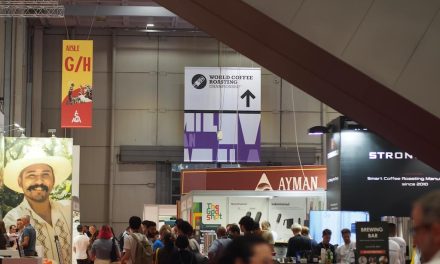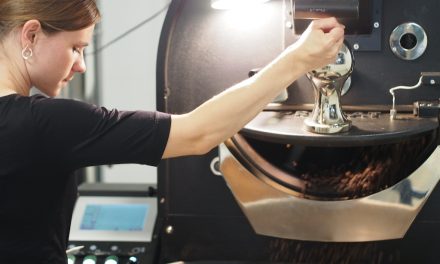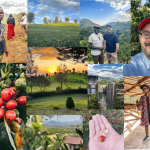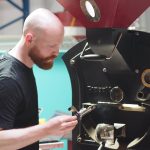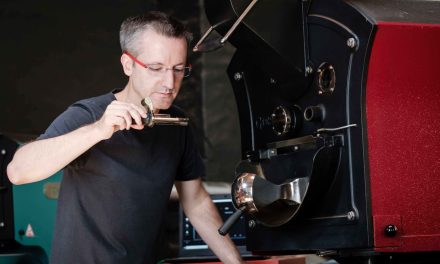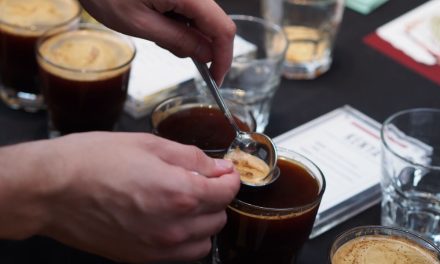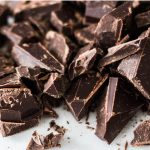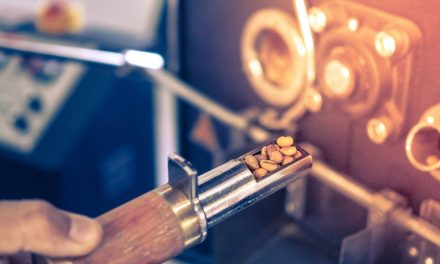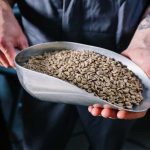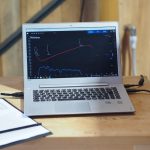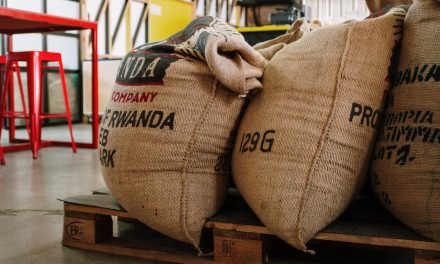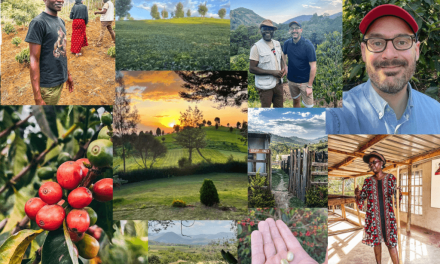
Some vocabulary about roasting
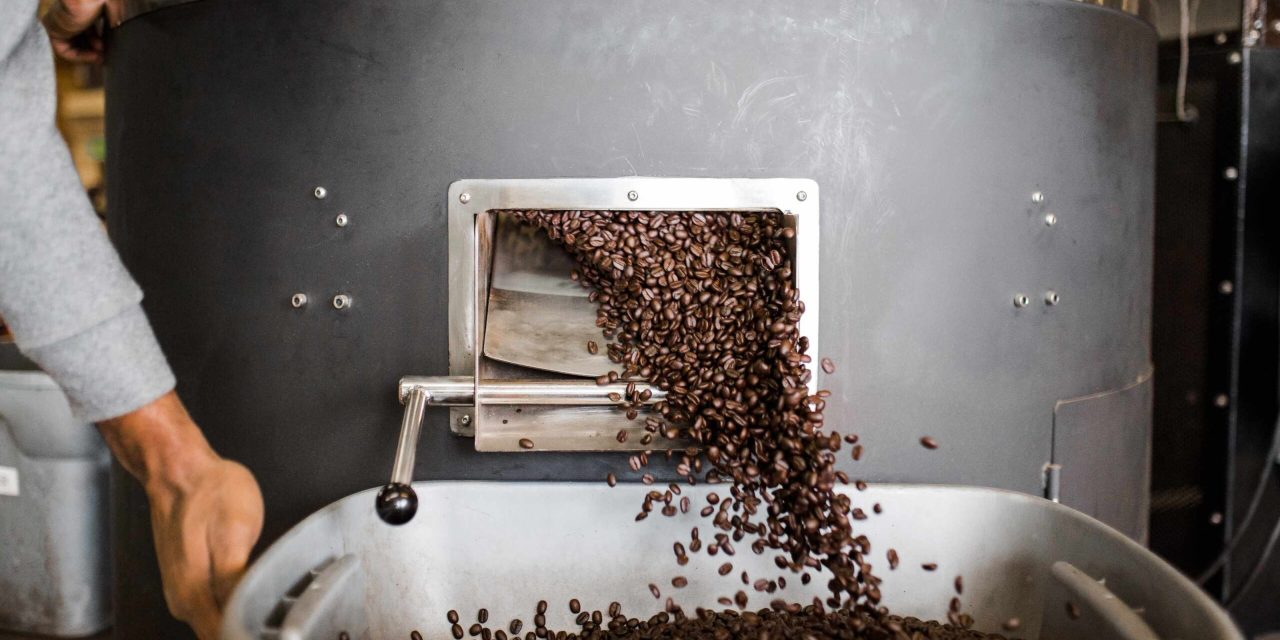
Could you explain the difference between conduction and convection?
And what about the Maillard reaction or the water loss during roasting?
Check here to see which terms you already know and whether you can fill in the tiny gaps.
Airflow
Describes the air flow in the roasting drum. Air is essential for coffee roasting, as can be seen in convection, where heat is transferred by air. If it is possible to control the air flow, coffee roasters have an additional way to influence the flavors that develop during the roasting process.
Batch
A batch is the amount of coffee roasted in one go. This depends on the size of the roaster and the roasting target.
Coffee tax
Some countries put an additional tax to roasted coffee.
A prominent example is Germany. For roasted coffee, it is € 2.19 per kilogram, and for soluble coffee, it is € 4.78 per kilogram.
The coffee tax to be paid is to be determined independently by each commercial coffee roaster with the help of a roasting book and submitted to customs. This is done by reporting to customs on the 10th of the month. The transfer is then due on the 20th of the same month.
Coffee tax in Germany for example has existed in various forms (customs duties, taxes) and at different levels (at peak times up to the equivalent of €5 per kilogram) since the end of the 17th century. Coffee tax also applies to imported roasted coffee. The details are regulated by the Coffee Tax Act.
Conduction
During roasting, there are various ways to transfer heat to and between the beans.
Conduction means that the heat is transferred to the beans via a surface. This can be the drum wall whenever the beans fall down in a drum roaster and come into contact with the hot roasting drum. It is like a frying pan: where there is contact with the hot surface, heat is transferred directly.
The heat always flows to the cooler substance, in this case the coffee beans. Through constant contact, heat continuously enters the coffee beans, whose molecules inside are steadily warming up and beginning to move.
One disadvantage of heat transfer by conduction is that it can lead to burning at the points where there is direct contact between the bean and the hot surface. This can result in unwanted changes in flavor.
Convection
This is another way of transferring heat to coffee beans for roasting, namely by using air as the contact medium. The beans conveniently float on the air stream and have no contact with a hot surface.
The air causes the molecules within the bean to vibrate and heat up. Because the beans are evenly surrounded by air, the result is an even roast.
Cooling
When the desired roasting point is reached, the roasting process must be stopped.
This is done either with air, water/air or just water. If the roasting process is not interrupted, the energy contained in the coffee beans will cause the coffee beans to continue cooking, similar to a boiled egg.
The desired aroma and flavor profile can be destroyed by this further cooking, and the coffee will have “baking notes” in its aroma, for example.
If air cooling is used, a stream of air is added in the cooling sieve. If combined water/air cooling is used, a little water is often added to the coffee in the roasting drum. In the second step, a stream of air is added in the cooling sieve, as with air cooling alone. If only water cooling is used, water is added to the roasted coffee.
If water is used for cooling, in whatever form, attention must be paid to the total water content of the coffee. In Germany for exmple, this must not exceed 5 percent of the weight of the roasted coffee (yes, there is a law to it).
Drum speed
How many times does the roasting drum turn per minute?
This information corresponds to the drum speed of a roaster. It is given in rounds per minute (RPM) and can be found in the manual of every roasting machine. With some roasting machines, the drum speed can be controlled manually.
The drum speed is important to prevent too much conduction when the drum is loaded unevenly.
inlet temperature
This refers to the temperature of the drum at the moment the coffee beans are floating into the roaster.
It is the starting point of the roasting curve for every coffee. The choice of the right inlet temperature depends on many factors: for example, on the ambient temperature, whether Robusta or Arabica is being roasted and what processing the beans have undergone, whether the beans are being used for a filter coffee or an espresso.
The first phase of the roasting process, the drying phase, begins immediately after the beans are loaded.
First Crack
During the first crack, the bean bursts open and water vapor escapes.
This is a physical and chemical reaction to the heat development in the coffee bean. The water in the bean gets hotter and hotter as the roasting process progresses and expands. This can be heard in the first crack, which is one of the many important moments in the roasting process.
It also marks the beginning of the development time, which can be noted separately. Depending on the roasting plant, the first crack can also be heard: for many, it resembles the popping of popcorn.
When the water vapor appears on the bean also depends, for example, on the type of coffee (Arabica and Robusta) and the processing (dry, wet, honey).
The first crack occurs at a different time for each batch in each bean, so there is a beginning of the first crack and an end of the first crack within the same roasting process.
Maillard Reaction
This is a non-enzymatic browning reaction. Sugars and proteins react under the influence of heat, forming new compounds.
These new compounds are formed both sequentially and in parallel, making the Maillard reaction a complex series of chemical reactions.
The Maillard reaction is most pronounced at temperatures between 115 and 140 degrees Celsius. New aromatic compounds are formed and give coffee its brown color. One undesirable effect of the Maillard reaction is that it can cause the formation of acrylamide. This can occur at temperatures between 170 and 190 degrees.
The Maillard reaction is named after the French scientist Louis-Camille Maillard. He described the reaction that was named after him in 1912 while he was actually looking for a way to produce proteins artificially (in vitro).
To this day, scientists from various disciplines are still trying to break down the complex reactions within the Maillard reaction.
Read here to know more what happens and why this reaction is crucial for coffee roasting.
Rate of Rise
The Rate of Rise (RoR) indicates how much the bean temperature changes in a specified interval.
If the measurement interval is 30 seconds and the Rate of Rise is 5, then the bean temperature rises by 5 degrees in this interval. In contrast to the roasting curve, the Rate of Rise starts later and is negative at first. At the turning point at the end of the drying phase, it becomes positive. Graphically, it therefore looks like a route from the summit towards the valley.
In addition to the roast color, development time, and drum speed, the rate of rise is a valuable parameter for influencing and maintaining roasts.
Roasting color
Roast color refers to the color of the coffee after roasting.
There are various scales used to measure roast color, for example Agtron or Colorette. To do this, a sample of the roasted coffee is ground and measured. The roast color can be used to give us an idea about the aroma of a coffee.
Roasting loss
Roasting loss is the weight loss of coffee during the roasting process. Coffee beans increase in volume and lose weight, mainly due to escaping water, which expands due to the heat and causes the bean to burst.
Roasting loss is expressed as a percentage. It is calculated using a simple rule of three: First, the difference between roasted coffee and raw coffee is determined in grams or kilograms or a unit familiar to you. Then this number is compared to the raw coffee used.
The roast loss answers the question: How much weight (in percent) does my roasted coffee lose compared to the raw coffee used? Whether you roast a filter coffee or an espresso can make a difference in the roast depth. The roast loss is important for both customs and the economic calculation of a coffee.
Roasting profile
A roasting profile corresponds to a recipe for roasting coffee.
Among other things, a roasting profile specifies the coffee for which it is applicable, what the inlet temperature is, how long the drying phase lasts, when the first crack is to be expected and how long the development time is.
All the important parameters for the repeated and consistent roasting of an individual coffee are therefore recorded in a roasting profile. A roasting profile can be noted down manually in a paper roasting log or digitally using software.
Second Crack
A second crack can take place during the same roasting process and follows the first crack as the roasting process continues. During the second crack, carbon dioxide (CO2) escapes from the bean.
At the same time, coffee oils also escape and coat the outside of the bean. The coffee bean is very porous and dark in color at this stage of roasting.

